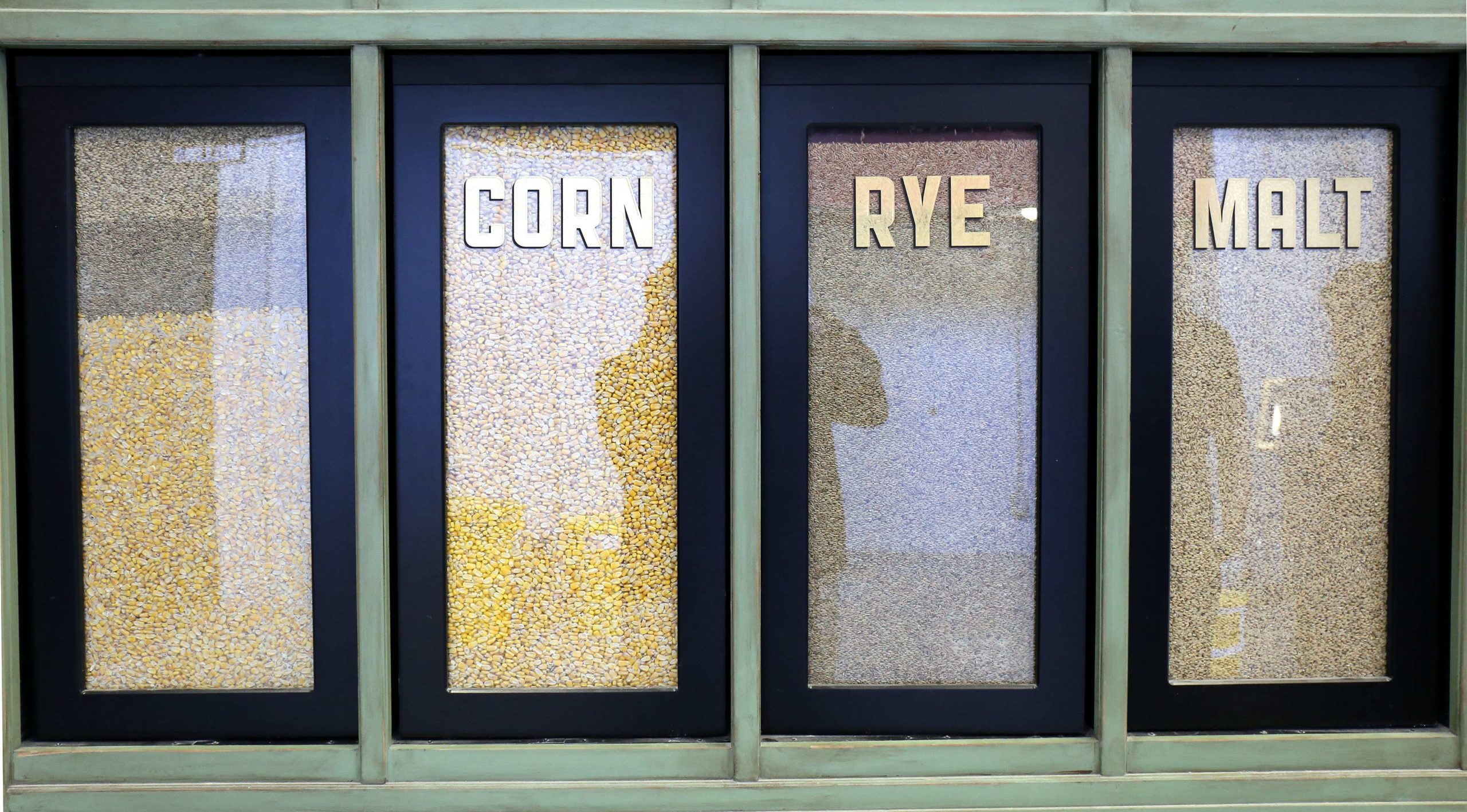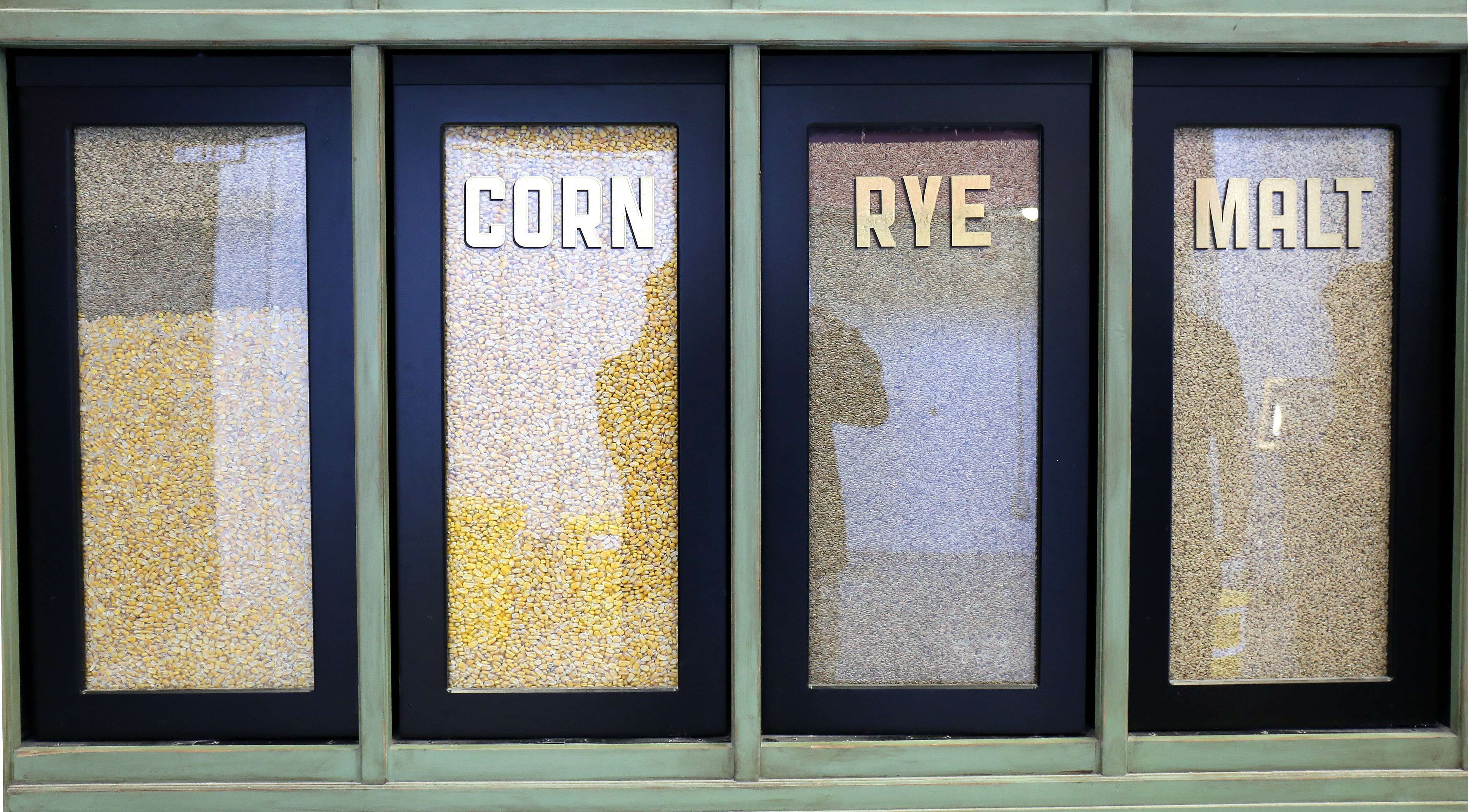Did you know that mash bills are really only used in American whiskey production?
American distilleries refer to the proportions of grains used as their “mash bill”. There are quite a few distinct styles of traditional American Whiskeys. Pennsylvania style ryes traditionally carry over 80% rye in their mash bills. Traditional Maryland style ryes are closer to 60% rye, balancing the mash bill with corn and a small amount of malted barley. (George Washington’s original rye whiskey from Mt. Vernon was 60% rye, 35% corn and 5% malted barley.) Bourbon, called “America’a spirit”, is at least 51% corn and is flavored with either rye or wheat grains and a small amount of malted barley. Corn whiskey is at least 80% corn, usually more. These traditional mash bills grew from necessity of the people that lived and farmed in the regions where they were developed. What grains grew best in that region were the grains used to produce the whiskey. The further west settlers moved, the better corn grew and the more corn went into their mash. It was the American way to cook all the ingredients in the same pot, so to speak. Corn cooks first, then the rye is added to the mash as the mashtun cools, then the barley (wheat would come last if its used).
Canadians do not use mash bills. In Canada, each grain is mashed and aged seperately. Those aged spirits are blended together afterward to produce a whisky to the blender’s liking. Originally, most Canadian whiskey was made from wheat. That style was called “common” whisky. Later, German and Dutch immigrants began adding rye flour to the mashes and their “common” whisky began to be called “rye”. The general blending technique now is to add a “flavoring whisky” to the “base whisky”. The “base” is distilled at a high ABV and tends to get most of its flavors directly from the 2nd or 3rd use wood as it’s aged. The “flavoring whisky” is distilled to a lower ABV (to hold on to more of the flavor in the grain), is usually either corn, wheat, rye or barley, and is aged in new or 2nd use oak.
Scotch took up the American tradition of mash bills in the mid 19th century when corn became cheaper and more readily available in Scotland. In the 17th and 18th centuries, distilled spirits came from barley, oats, and rye. Oats were often 3 or 4 times distilled. Malted whisky soon became the favored spirit in the 18th and 19th centuries. By 1877, corn was more avaialable and Scottish mash bills looked more like this: “ maize 77%, barley 20%,oats 2,5%, wheat 0,4%, rye 0,02%, malted barley 0,14%.” Cheap corn and imported grains, along with the Coffey still and the crisis in the wine/cognac industry openned up production of scottish whisky. Today most scotch is made entirely from malted barley. Blended whiskies are the combination of different aged stocks of single malts and grain whiskies.
Irish whiskey was traditionally a pot still whiskey that may have been distilled two or three times, but was always made from barley, the greater part of which was malted (probably using peat) and the smaller part unmalted. Today, pot stills (much larger ones) triple distill mashes that are largely unmalted barley with a smaller amount of malted barley (and unpeated). That is pure pot still whiskey. In the early 20th century, it became legal and the norm for Irish whiskey to begin to blend their pot still whiskeys with cheap grain whiskeys. It is difficult to say that there is an Irish mash bill other than the addition of unmalted barley.


